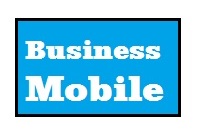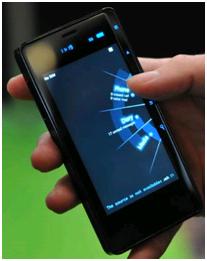This weeks launch of both the RIM Torch 9800 and the Nokia N8 and the announcement of the forthcoming Windows Phone 7 Phones reminds us of just how sick we are of seeing the phrase “iPhone killer.” It’s also got us thinking about what happened to the killers of the past.
First off there was the BlackBerry Storm 9350. Released in November 2008, it was a BlackBerry with a touchscreen, and without the classic BlackBerry keypad. It was hyped to death by Vodafone in the UK, but despite wall to wall advertising it was a bit of a damp squib. The screen was the wrong sort of touch – haptic feedback need we say more – and the software was decidedly iffy, and it didn’t have Wifi. The Storm 2 launched a year later didn’t do much better, we don’t recall anyone promoting it. So we’re not holding out a lot of hope for the Torch, at least this time they have the right sort of touch screen.
Then there was the Sony Ericsson Xperia X1 . The Xperia was launched in September/October 2008 with a huge amount of hype and again it fell by the wayside, nice looking, big keyboard, but just too expensive, and there were some build quality issues, and more importantly it also ran Windows Mobile 6.1 – not a great choice.
The last real iPhone killer that wasn’t a me too product and with a chance of getting in early before the iPhone took over the market was the Nokia N97. Launched in June 2009 with the usual hype it was a successor to the very successful and well loved N96, unfortunately it was horrible to use and it died a death. An improved Mini N97 was introduced in October 2009 but by then it was too late.
The only credible alternative to the iPhone has been Android, which of course isn’t a phone it’s an operating system.
All this talk of iPhone killers also reminds us that it’s way past the date when Israeli iPhone Killer the ELSE was supposed to be hitting the streets.
The ELSE was launched at quite a glitzy launch in November last year at Sketch – the most expensive restaurant in London. It was described in the invite as
“Not a PDA, Smart Phone, or Feature Phone. The ELSE is an attempt to revolutionize the way we think about the handset industry, and what a handheld device can and should do.”
And we actually thought it was one of the first devices that could actually be an iPhone killer.
Based on Linux and using the mobile know-how of Israeli tech-experts Emblaze the phone had a great spec; a 3.5″, 854×480 resolution display, a 600MHz processor, 256MB of RAM, 16GB or 32GB flavours, and a 5 megapixel camera. But more importantly it had an operating systems designed from the ground up. It wasn’t a me-too product, it had learned from Android that you had to do something different to succeed and it did.
So where is the ELSE? According to CEO , Amir Kupervas, he hoped to have to have the First ELSE phone on to the market by the middle of the year ie June but it’s still not here.
The one thing that will make or break the ELSE is an app store. If it launches without one it will die. If it launches and it can take advantage of the Android store then it has a chance. The “secret” of the iPhone’s success is the app store, without it, the iPhone would just be yet another phone – albeit a well designed one – with the app store it’s something that constantly amazes.
For anyone entering the iPhone market, be it RIM with the Torch, Nokia with the N8, Microsoft with Windows Phone 7, or even the ELSE in order to beat the iPhone they have to get their approach to apps right, they have to be the the same or better, and that’s no easy task, we’d go as far as to say it’s almost impossible.


1 comment for “Torch, N8, WP7, what Else?”